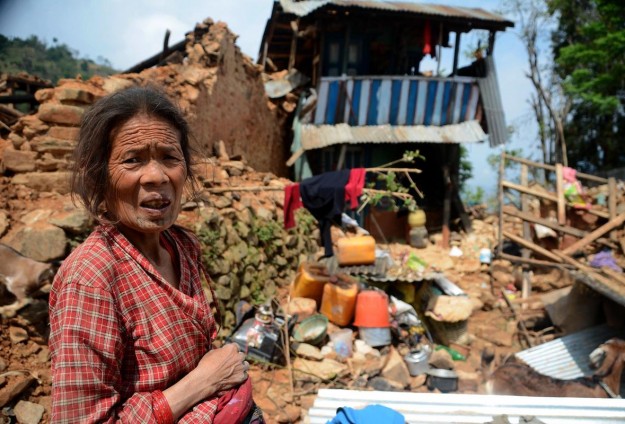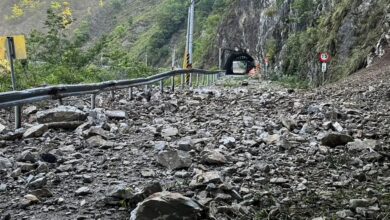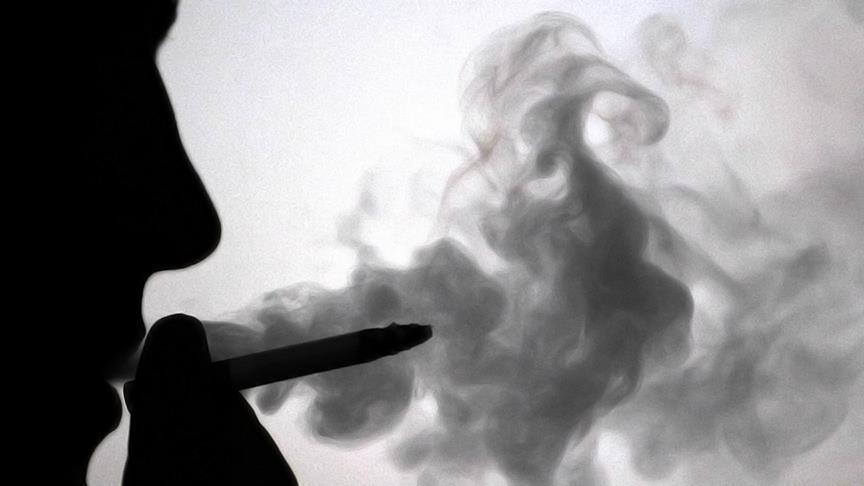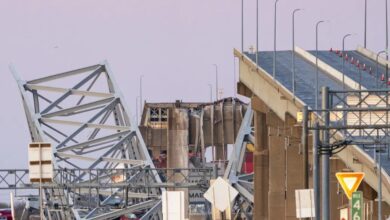 The death toll from Nepal’s devastating earthquake sharply rose to 6,155 on Thursday, according to police figures.
The death toll from Nepal’s devastating earthquake sharply rose to 6,155 on Thursday, according to police figures.
More than 13,400 have been injured by the earthquake with more bodies still being recovered from the wreckage by emergency services.
The Nepali Home Ministry estimates that more than 130,000 houses have been completely destroyed by the earthquake.
The U.N. said that two people were rescued alive Thursday as search and rescue operations wind down.
Frustrated by slow aid delivery and fearing the spread of disease in the quake’s aftermath, hundreds of thousands of frustrated Nepalis have fled capital Kathmandu for less affected home districts.
Accordin to Anadolu Agency, World Health Organization-led meeting in Kathmandu on Thursday, Nepali health ministry officials said that they did not currently need more medical teams to arrive, but required 4,000 tents and teams to be deployed in the Gorkha district, near the epicenter of the quake.
The organization, which has been coordinating medical relief efforts, is concerned that some smaller medical teams arriving in Nepal without the necessary resources could actually become a burden on the health response.
“Unfortunately, they do not have the sustainability to be able to deploy into the remote areas where we need them the most,” said Dr. Ian Norton, who is coordinating foreign medical teams, in a statement released Wednesday.
“An example of best practice is a team that arrived the night before last, with 120 people and with full self-sufficiency. They will be able to deliver care with no external support and will be no burden on the community,” he said.
Sushil Gurung, a psychiatric social worker from the Nepali government-run Mental Hospital, told the Anadolu Agency that they would begin offering therapy to people traumatized in the aftermath of the quake.
“If you look at the past events, like in Kashmir or Haiti or Peru or anywhere, people go through a lot of these traumatic experiences,” said Gurung. “If they already went through a traumatic experience in the past, let’s say they’ve been [victims of] domestic violence or anything, they’ll be more traumatized with this kind of experience.”
“If they’re taking medication or running out of medication, we’ll provide them with medication, but basically we’ll provide them with psychosocial support,” he said.
Relief efforts have begun to reach remote areas of the disaster zone that had previously been out of reach, though operations have been limited by bad weather.
The UN said that search-and-rescue operations were restricted outside the Kathmandu Valley, with many affected villages only accessible by foot and take four to five days to reach.
Still, Nepalis remain on edge since Saturday’s magnitude-7.8 quake.
Rajeev Dobhal, a wing commander in the Indian Air Force, said that he glimpsed the destruction in remote areas when flying to Kathmandu as part of India’s relief teams.
“Initially, when we saw the first visuals from the aircraft, villages were flattened,” he said.
Doctors Without Borders said that an initial aerial assessment of 65 villages in the vicinity of Kathmandu showed the majority had been visibly damaged or destroyed.
The UN called for a significantly increased international response Wednesday by launching a $415 million appeal to provide emergency shelter, water and food to the eight million people it said had been affected.
The international community has pledged millions of dollars of aid to Nepal; numerous governments, including regional neighbors China, India and Pakistan have sent search-and-rescue teams.
Turkey has also contributed to search-and-rescue efforts under the Prime Ministry’s Disaster and Emergency Management Authority, known as AFAD.
On Wednesday, AFAD supplemented earlier contributions by sending 16 tons of supplies including tents for the displaced, food, water and supplies for children.
Immediately after the quake, the Turkish authority had sent a 96-member search and rescue team along with 1,000 tents and 320 food packages.
Several other Turkish agencies — including the Humanitarian Aid Foundation, Turkish Red Crescent, Search and Rescue Foundation and Confederation of Public Servants Trade Unions — sent have sent emergency and medical supplies, doctors and search and rescue experts.
Saturday’s quake — the worst to hit the Himalayan nation since 1934 — destroyed buildings, ripped up roads and set off avalanches in the Himalayas, including one which tore through the Mount Everest base camp, killing at least 18 people.
Climbers at Everest’s base camp were being evacuated. Tour organizers Asian Trekking said that Sherpa guides ensured the safety of climbers by taking them back to base camp.
Several historic temples have collapsed, including the Kathmandu Valley’s three iconic Durbar Squares — palatial plazas from the historic Newari kingdom. The 62-meter tall 19th century Dharahara tower in central Kathmandu, was also brought crashing down by the quake.
An additional 72 people were also killed in India, according to India’s home secretary L.C. Govak. Chinese state media reported 25 deaths in Tibet (AA).
[adrotate banner=”46″]
 The death toll from Nepal’s devastating earthquake sharply rose to 6,155 on Thursday, according to police figures.
The death toll from Nepal’s devastating earthquake sharply rose to 6,155 on Thursday, according to police figures.


